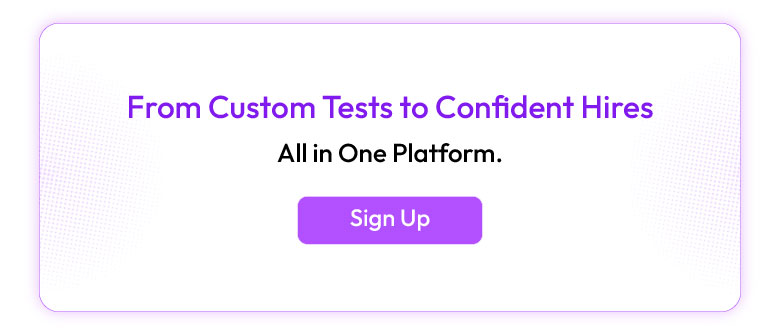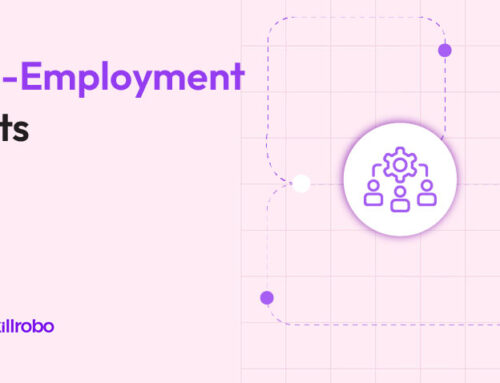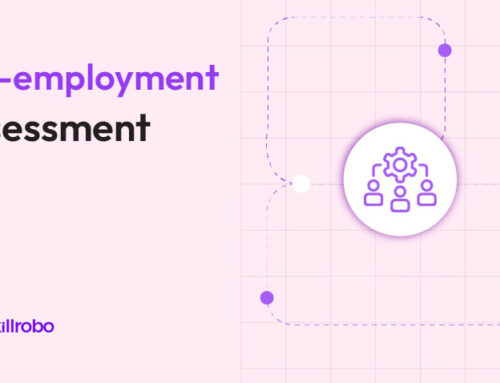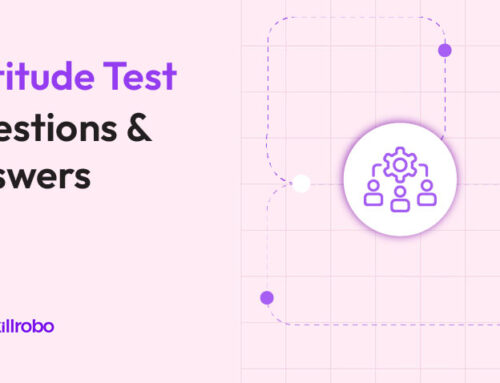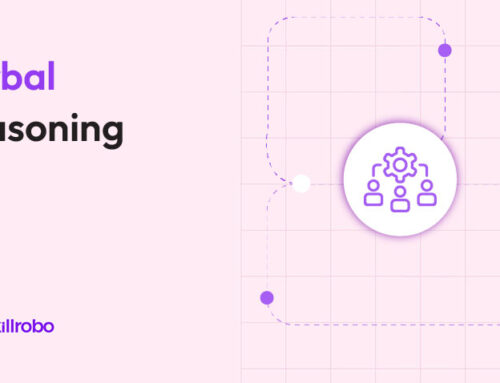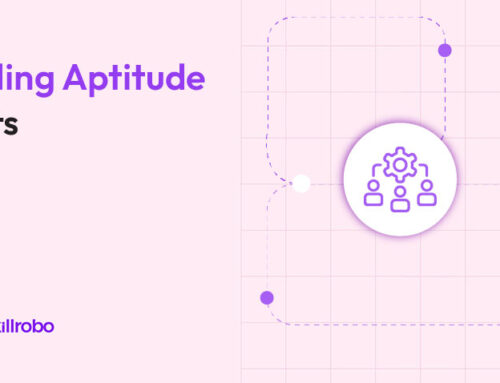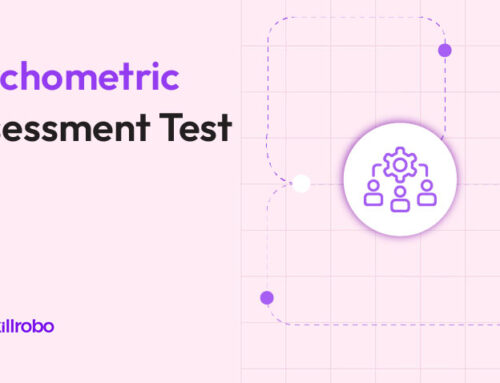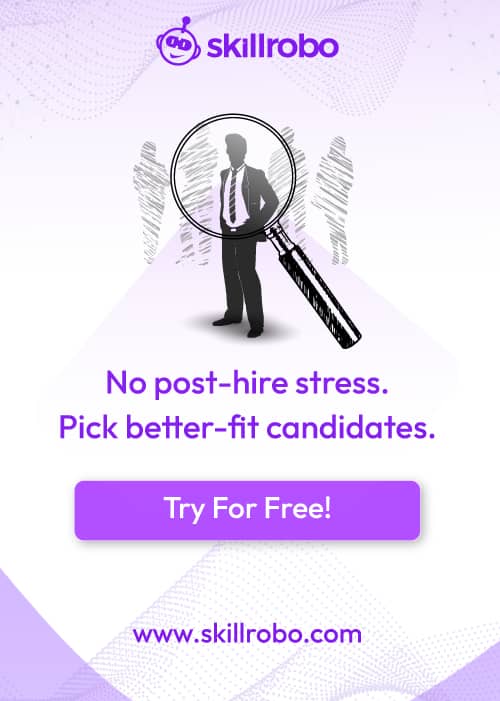Table of Contents
Related articles
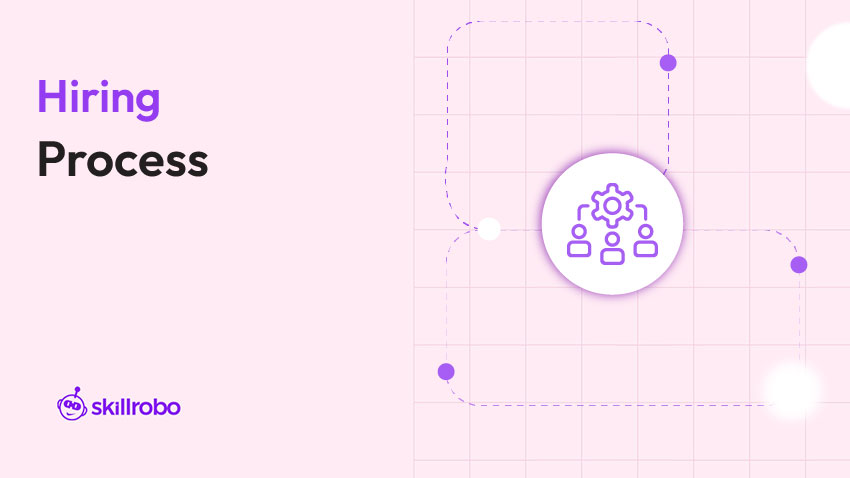
The CEO of an organization is required to make decisions. Which city/country should the next major expansion be launched in? How does new software increase the company’s performance? Who should be hired?
Indeed, it is understandable that an $8 million decision to get new software or process, or system, or set up another major expansion would rank higher than the $80,000 decision, an employee’s annual salary. It gets more attention and research when the zeroes are more, isn’t it?
However, the truth is that hiring decisions can make or break a company. Typically, most of the HR and talent acquisition teams have this mindset – We’ve got an open slot and found a decent resume to go for. If the candidate doesn’t work out, we can let them go and replace them with another. This is called the Function Fuller mindset, where managers use the “plug and play” to choose applicants from the shelf of resumes.
Every company has a vision and sets a goal every year, which they strive to achieve. The vision is the company’s future, while the mission is the in-between stages that the company has to accomplish in realizing the vision. Every company uses strategic planning to formulate its vision and mission. For having to implement effective strategic planning, a company needs to have strong human resources. The vision and mission that a company formulates act as a guide, and the human resources understand them and work towards achieving them.
With that being said, a comprehensive hiring recruitment process needs to be planned accordingly by implementing effective strategies. The team must know how to make a recruitment plan. In the recruitment strategies, companies set the qualifications and the competencies expected from the candidates. The competency of the applicants needs to be reconciled to fit the needs of the company.
The HR team will precisely formulate the candidates’ competencies, which will help achieve the company’s business targets. They will prepare the roles and responsibilities, work plan, company expectations, skill sets needed, etc. Hence, recruitment is the first step that a company takes toward achieving its business objectives.
Importance of Effective Recruitment Strategies
A proactive human resource approach to scrutinizing and picking the top talents has many benefits. Some of the benefits of optimizing your hiring process include:
1. Effectual Job Postings
The vacant position in your company needs to be posted via various channels – newspapers, job boards, company websites, career fairs, and social media platforms. A planned recruitment approach will be more effective in identifying the top talent. Spend some time and resources to use the most efficient methods to reach the candidates. This will help attract candidates and form a larger pool of strong candidates.
2. Meticulous Screening
You will be flooded with applicants in response to your job posting. That is the good news. But you have to screen each one to narrow down to a manageable quantity consisting of the top talents, which is bad news. You may be inclined to search and eliminate the candidates who don’t meet the set qualifications. But it is more effective to take up a positive approach, as you are looking for someone to hire and not to eliminate. So, screen in instead of screening out.
Since the internet has completely transformed, companies have meticulously used application tracking systems (ATS) to screen resumes. It is a type of software in which the recruiters collect, scan, and rank the applications. Generally, large organizations use ATS as they receive several thousand inbound resumes weekly.
Therefore, 99% of Fortune 500 companies rely on ATS to streamline and optimize their hiring process. When you automate your recruitment process, you can save time and improve efficiency. Following this, the selection team will focus on moving them to further interview stages. They will further be tested using assessments, situational and role-plays, and final face-to-face interviews.
3. Recruitment Marketing
Strategic recruiting is an approach to winning the best talents using three main entities – employer branding, recruitment cum direct directing, and skilled selling. Combining these three components can create an effective response to the dynamic job market. Dr. John Sullivan says that recruitment is a sales process, and there are 5Ps that will help get the best applicants. The 5Ps are prospects, promotion, process, persuasion, and people, with productivity being the silent “P.”
Prospects are the part where you attract the top talent. You can’t simply hire them unless you attract them. Only when the top talents gain interest in your company will they be motivated to perform well and get the job. Second, there is the promotion since prospects are simply attraction factors. Here, recruiters create a proactive image of the company and indulge in spreading the brand image.
Here, the promotion marketing is subtly handled by the hiring team to make sure the top talent stays motivated. The third is the process stage, where the competent candidates will be matched with the experience of how they will be treated once they are selected.
Sometimes candidates will have multiple offers. However, you need to pursue the top talent without losing them, and you cannot do this unless you find out their expectations. Identify their job acceptance criteria in the interview process. Finally, make sure the candidates are treated fairly throughout the selection process. The tactical recruiting goal is to fill the positions on time and under budget, and to form a productive team. This is the end result of great hiring.
4. Improved Morale and Reduced Attrition
According to Forbes, when the company has a better culture fit, it leads to higher levels of employee retention. Employee turnover is always expensive for companies, and the Center for American Progress reports that the cost of employees leaving a company is 21% of their annual salary. So, an organization must hire people with the right skills and suitability. They need to ensure that they adapt to the organization’s culture and contribute to greater efficiency.
If the pay and benefits can match the expectations of the candidates, there will be increased employee retention. This is why professionals change jobs. Moreover, rewards and recognition are other influential strategies companies can follow to improve candidates’ morale, especially during onboarding. This will improve their morale and keep them motivated.
5. Social Media Sourcing
According to a survey conducted by Harris Poll in 2020, about 70% of recruiters use social media for potential candidate screening. In 2021, 79% of job seekers and 73% of millennials used social media platforms to land their last job positions. LinkedIn remains the top channel for recruitment, followed by Twitter and Facebook. Effective use of social media to source talent can create multiple entryways for top talent to find your company.
Nowadays, increasing corporate online presence makes a drastic difference in branding the image and enhancing awareness. Social media is a more cost-effective recruiting sourcing strategy for attracting top talent than hosting expensive job fairs. Sticking to the traditional methods of recruiting can limit your exploration. Therefore, social media tactics can be a new pipeline for attracting the top talent for your company.
Challenges that Recruiters Face!
Though you optimize your hiring strategies within talent acquisition, attracting the top talent, guiding them through the onboarding, and making them feel safe within the new work environment is the biggest challenge. Especially after the COVID-19 pandemic, the majority of companies are looking to expand their workforce.
They wanted to make a potential recovery in 2021 and are competing with one another to attract the best talent. Andrew Hellwege, XpertHR’s survey editor, says that 10% of organizations wanted to eliminate some of their job positions, while 30% wanted no change in their workflow size. 12% of the organizations are still unsure about their recruitment sourcing strategies.
The job market is so noisy. Besides, more than 1000 recruiters are trying to reach the same candidates as you. This is where you need to have a strong employee brand. Sharing stories of your company’s employees will gain the attention of job seekers. The motive behind this is to share your company’s purpose with job seekers. The stories can be shared on career platforms like LinkedIn and on the company’s website to encourage candidates to follow your company.
Furthermore, the skills gap is another major obstacle that recruiters face. On the other hand, hiring volatility is becoming the new norm where companies keep making internal and external changes to match the dynamism of the job market. With the increasing hiring volatility, the gap keeps widening, too. The skills gap is the space between the employees’ current skill level and what is expected from them in the future to attain the company’s goals. Periodically conducting a talent gap analysis can help train the employees and stack them up against the competition.
Zen of Hiring – 5 Ways to Optimize Your Hiring Process
Whether they are applying for a sales intern position or for a chief marketing officer (CMO), there are three essential hiring questions. Most of the communication with the potential candidates will be specific to their applied position. These three questions will help you better understand the potential candidates.
- What do you think about our business? – This is one of the most common questions a recruiter asks. This reveals whether the candidate has done their homework in knowing about the business. They don’t have to give an expert answer; instead, they need to have done some thinking.
- What are your thoughts regarding the job position? – This question will reveal how much the candidate has paid attention during their interview process. The candidate’s answer will say what they think about the work environment and the people they have met during the hiring process.
- Like all of us, you might have had some development plans in the past. What is your goal, and what do you expect from the company? – Asking the candidates to state their “greatest weakness” can shut them down. But asking them about their career development plan can help them give a thoughtful answer. If they give a response like, “I will work very hard,” then the candidate is not self-aware and is not sure about their professional growth.
There is no secret to the Zen of hiring. All you need to do is ask the right questions. Here are five strategies that will help you optimize your hiring process.
1. Perceive and Anticipate
The first hiring strategy is to know what you are looking for in the applicants. A sound recruiting system begins with the competencies of knowledge, motivation, and behaviors. Having a strong HR team reflects the goals and responsibilities of the job position. However, 25% of organizations start their search without setting their motive.
This mismanagement can squander the company’s precious time. If the hiring officials and the recruiting team don’t share a common goal, it will result in poor hiring decisions. Even if the company has developed hiring competencies, the job market fluctuates with time. The hiring team mustn’t lose its validity while recruiting.
Anticipation. During the screening process, recruiters must conduct thorough background checks. But, when the delays are longer, it can aggravate the candidates to start looking for other offers. As said earlier, top talents will have multiple offers in hand. If your company takes a long time to schedule the interview after the initial screening, top talent might slip into the gap.
Instead, diagram your recruiting process and look for unnecessary steps that might cause a delay. Shorten it and make quantum improvements. You can create recruiting centers for candidates’ convenience to enhance the hiring speed and improve the candidate experience.
2. More than One Source
With the increasing competition, you need to wage the talent war using multiple hiring fronts. Building a team by hiring from one or two sources is long gone. You must have weapons like exclusive in-house recruiting staff, an employee-referral program, headhunters, web and social media platforms, advertisements, job postings, and campus recruiting.
Web-based selection tools and recruitment automation tools help organizations manage thousands of resumes in a matter of hours to scrutinize those specializing in different technical positions.
3. Compelling Employee – Value Proposition
Ask yourself, “Why should they choose your company over your competitor?” Well, if you can answer this question honestly, then you are on the journey toward building your competitive army of potential candidates. The competition for top talent is viewed in the same way as the sales and marketing team views its competition for customers.
How do you beat the competition? You need to have a strong employee value proposition – EVP. The EVP should articulate why your organization is the best selection for the top talent. The EVP is not just a simple document. It appeals to candidates with competitive job packages, flexibility, career growth, culture fit factors, and reputation.
For instance, Orkin, a pest-control company in Pennsylvania, United States, has been a reputable company since 1901. When asked its employees about the organization and work culture, the answers were astounding. They said that the pest control jobs, where they get rid of bugs and pests from homes, may not be the most “glamorous job.”
But the employees stated that they enjoy the working environment, job freedom, ability to build relationships with customers, competitive pay, and flexible working hours. Orkin’s EVP is one example of a well-articulated EVP. It is precise and factual. So, when you create your EVPs, they should be devoid of fake promises and reflect your company’s mission.
In addition to this, the employees need to be offered monetary benefits and incentives based on their performance. Secondly, the employees need to have career development programs and training to help them assume new roles. This fosters greater job satisfaction and reduces employee attrition.
4. Settling for the “Can & Will”
Most companies look for the skills and technical knowledge needed for the job position. This is easier for them to screen those applicants with the required “can-do” qualities. Even so, the new hires fail as they lack the “will do” qualities that are absolute necessities. Employees rarely leave a company because of skill deficiency.
Instead, they leave the company because of intolerable job stress, unsatisfactory teamwork, no promotion opportunities, unsatisfactory pay scale, etc.
The hiring manager needs to look beyond the resumes. The hiring managers should be capable of recognizing the motivational factors and making sure the new hires inherit them. The factors should reflect the ideal work environment and make it worthwhile for both the employee and the organization.
The “will do” qualities that an employee showcases where they go above and beyond to achieve the organization’s mission and vision. It depends on their motivation and cultural fit.
When you hire, you study and analyze the candidates’ past behavior. Instead of asking them to explain, you need to watch them in action. You can also use the “behavior predicts behavior” model. It is a targeted selection interview system where, using the model, the recruiters collect specific examples of a candidate’s past behavior.
These samples indicate their competency and reveal if they are a match. Furthermore, there is no better way to assess candidates’ actual behavior than to observe them in a simulated role-play situation.
5. Blending Technology and Building A Strong Team
Gathering resumes is simply the tip of the iceberg. Organizations that use web-based recruitment assessment software can spend more time on value-added prospects. Recruitment automation tools can help companies pick a handful of potential candidates from the applicant stream. Tools such as Skillrobo, are ecosystems for hiring managers and recruiters to thrive.
They offer features to screen resumes, customized assessment tests for assessing job-specific skills, performance analytics, etc. Technology has radically transformed the way hiring is done. These sophisticated tools enhance the speed and quality of hiring and slash costs. Every company needs all-rounders, with the organizational structure becoming more and more fluid by the day.
The recruitment war can be won only when the recruiters are also skilled and proficient. They should know how to make a positive impression on the candidates. Treat every candidate as your best customer and interact with them in a friendly and receptive way.
Eliminate unconscious and conscious biases to improve fairness. No candidate should be selected or rejected based on their gender, ethnicity, or any other cultural background. Remember, the pool of candidates that you select will be the best team that takes your company to the next level. They are the most valuable possessions of your company, and they have the power to make or break your organization.
Dynamism in Hiring Strategies
You need to be dynamic if you want to stay in the market. Good hiring must be dynamic, where the process is characterized by constant change, activity, or progress happening in the job market. With time, the requirements for the specific job position evolve. For instance, your needs for a financial analyst position would have changed from two or three years ago. Therefore, companies need to optimize their hiring strategies to match the dynamism.
The world of employment was more stable in the past. People worked in the same company until they found the golden watch. The company would put ads in the classifieds, and a pool of candidates would line up with the same resumes. The hiring goes on and on passively. But now, the candidates, especially millennials, have developed a new attitude. They expect companies to stand out and have unique work environments that would challenge their skills.
Employers should keep up with the pace of constant technological and media evolution – branded web pages, electronic resume readers, ATS, etc., attracting recruiters. It takes hard work and a keen awareness of what is happening in the job market to attract top talent. You need to reel in the best fits when the time is right.
Companies train employers to consider hiring a moving target and advise them to cast a wide net, aiming correctly. To take your company to the next level of performance, you need a recruitment selection tool like Skillrobo. It is an online pre-employment assessment software designed to suit all your hiring needs. Visit to know more and sign up today for a free demo.

The CEO of an organization is required to make decisions. Which city/country should the next major expansion be launched in? How does new software increase the company’s performance? Who should be hired?
Indeed, it is understandable that an $8 million decision to get new software or process, or system, or set up another major expansion would rank higher than the $80,000 decision, an employee’s annual salary. It gets more attention and research when the zeroes are more, isn’t it?
However, the truth is that hiring decisions can make or break a company. Typically, most of the HR and talent acquisition teams have this mindset – We’ve got an open slot and found a decent resume to go for. If the candidate doesn’t work out, we can let them go and replace them with another. This is called the Function Fuller mindset, where managers use the “plug and play” to choose applicants from the shelf of resumes.
Every company has a vision and sets a goal every year, which they strive to achieve. The vision is the company’s future, while the mission is the in-between stages that the company has to accomplish in realizing the vision. Every company uses strategic planning to formulate its vision and mission. For having to implement effective strategic planning, a company needs to have strong human resources. The vision and mission that a company formulates act as a guide, and the human resources understand them and work towards achieving them.
With that being said, a comprehensive hiring recruitment process needs to be planned accordingly by implementing effective strategies. The team must know how to make a recruitment plan. In the recruitment strategies, companies set the qualifications and the competencies expected from the candidates. The competency of the applicants needs to be reconciled to fit the needs of the company.
The HR team will precisely formulate the candidates’ competencies, which will help achieve the company’s business targets. They will prepare the roles and responsibilities, work plan, company expectations, skill sets needed, etc. Hence, recruitment is the first step that a company takes toward achieving its business objectives.
Importance of Effective Recruitment Strategies
A proactive human resource approach to scrutinizing and picking the top talents has many benefits. Some of the benefits of optimizing your hiring process include:
1. Effectual Job Postings
The vacant position in your company needs to be posted via various channels – newspapers, job boards, company websites, career fairs, and social media platforms. A planned recruitment approach will be more effective in identifying the top talent. Spend some time and resources to use the most efficient methods to reach the candidates. This will help attract candidates and form a larger pool of strong candidates.
2. Meticulous Screening
You will be flooded with applicants in response to your job posting. That is the good news. But you have to screen each one to narrow down to a manageable quantity consisting of the top talents, which is bad news. You may be inclined to search and eliminate the candidates who don’t meet the set qualifications. But it is more effective to take up a positive approach, as you are looking for someone to hire and not to eliminate. So, screen in instead of screening out.
Since the internet has completely transformed, companies have meticulously used application tracking systems (ATS) to screen resumes. It is a type of software in which the recruiters collect, scan, and rank the applications. Generally, large organizations use ATS as they receive several thousand inbound resumes weekly.
Therefore, 99% of Fortune 500 companies rely on ATS to streamline and optimize their hiring process. When you automate your recruitment process, you can save time and improve efficiency. Following this, the selection team will focus on moving them to further interview stages. They will further be tested using assessments, situational and role-plays, and final face-to-face interviews.
3. Recruitment Marketing
Strategic recruiting is an approach to winning the best talents using three main entities – employer branding, recruitment cum direct directing, and skilled selling. Combining these three components can create an effective response to the dynamic job market. Dr. John Sullivan says that recruitment is a sales process, and there are 5Ps that will help get the best applicants. The 5Ps are prospects, promotion, process, persuasion, and people, with productivity being the silent “P.”
Prospects are the part where you attract the top talent. You can’t simply hire them unless you attract them. Only when the top talents gain interest in your company will they be motivated to perform well and get the job. Second, there is the promotion since prospects are simply attraction factors. Here, recruiters create a proactive image of the company and indulge in spreading the brand image.
Here, the promotion marketing is subtly handled by the hiring team to make sure the top talent stays motivated. The third is the process stage, where the competent candidates will be matched with the experience of how they will be treated once they are selected.
Sometimes candidates will have multiple offers. However, you need to pursue the top talent without losing them, and you cannot do this unless you find out their expectations. Identify their job acceptance criteria in the interview process. Finally, make sure the candidates are treated fairly throughout the selection process. The tactical recruiting goal is to fill the positions on time and under budget, and to form a productive team. This is the end result of great hiring.
4. Improved Morale and Reduced Attrition
According to Forbes, when the company has a better culture fit, it leads to higher levels of employee retention. Employee turnover is always expensive for companies, and the Center for American Progress reports that the cost of employees leaving a company is 21% of their annual salary. So, an organization must hire people with the right skills and suitability. They need to ensure that they adapt to the organization’s culture and contribute to greater efficiency.
If the pay and benefits can match the expectations of the candidates, there will be increased employee retention. This is why professionals change jobs. Moreover, rewards and recognition are other influential strategies companies can follow to improve candidates’ morale, especially during onboarding. This will improve their morale and keep them motivated.
5. Social Media Sourcing
According to a survey conducted by Harris Poll in 2020, about 70% of recruiters use social media for potential candidate screening. In 2021, 79% of job seekers and 73% of millennials used social media platforms to land their last job positions. LinkedIn remains the top channel for recruitment, followed by Twitter and Facebook. Effective use of social media to source talent can create multiple entryways for top talent to find your company.
Nowadays, increasing corporate online presence makes a drastic difference in branding the image and enhancing awareness. Social media is a more cost-effective recruiting sourcing strategy for attracting top talent than hosting expensive job fairs. Sticking to the traditional methods of recruiting can limit your exploration. Therefore, social media tactics can be a new pipeline for attracting the top talent for your company.
Challenges that Recruiters Face!
Though you optimize your hiring strategies within talent acquisition, attracting the top talent, guiding them through the onboarding, and making them feel safe within the new work environment is the biggest challenge. Especially after the COVID-19 pandemic, the majority of companies are looking to expand their workforce.
They wanted to make a potential recovery in 2021 and are competing with one another to attract the best talent. Andrew Hellwege, XpertHR’s survey editor, says that 10% of organizations wanted to eliminate some of their job positions, while 30% wanted no change in their workflow size. 12% of the organizations are still unsure about their recruitment sourcing strategies.
The job market is so noisy. Besides, more than 1000 recruiters are trying to reach the same candidates as you. This is where you need to have a strong employee brand. Sharing stories of your company’s employees will gain the attention of job seekers. The motive behind this is to share your company’s purpose with job seekers. The stories can be shared on career platforms like LinkedIn and on the company’s website to encourage candidates to follow your company.
Furthermore, the skills gap is another major obstacle that recruiters face. On the other hand, hiring volatility is becoming the new norm where companies keep making internal and external changes to match the dynamism of the job market. With the increasing hiring volatility, the gap keeps widening, too. The skills gap is the space between the employees’ current skill level and what is expected from them in the future to attain the company’s goals. Periodically conducting a talent gap analysis can help train the employees and stack them up against the competition.
Zen of Hiring – 5 Ways to Optimize Your Hiring Process
Whether they are applying for a sales intern position or for a chief marketing officer (CMO), there are three essential hiring questions. Most of the communication with the potential candidates will be specific to their applied position. These three questions will help you better understand the potential candidates.
- What do you think about our business? – This is one of the most common questions a recruiter asks. This reveals whether the candidate has done their homework in knowing about the business. They don’t have to give an expert answer; instead, they need to have done some thinking.
- What are your thoughts regarding the job position? – This question will reveal how much the candidate has paid attention during their interview process. The candidate’s answer will say what they think about the work environment and the people they have met during the hiring process.
- Like all of us, you might have had some development plans in the past. What is your goal, and what do you expect from the company? – Asking the candidates to state their “greatest weakness” can shut them down. But asking them about their career development plan can help them give a thoughtful answer. If they give a response like, “I will work very hard,” then the candidate is not self-aware and is not sure about their professional growth.
There is no secret to the Zen of hiring. All you need to do is ask the right questions. Here are five strategies that will help you optimize your hiring process.
1. Perceive and Anticipate
The first hiring strategy is to know what you are looking for in the applicants. A sound recruiting system begins with the competencies of knowledge, motivation, and behaviors. Having a strong HR team reflects the goals and responsibilities of the job position. However, 25% of organizations start their search without setting their motive.
This mismanagement can squander the company’s precious time. If the hiring officials and the recruiting team don’t share a common goal, it will result in poor hiring decisions. Even if the company has developed hiring competencies, the job market fluctuates with time. The hiring team mustn’t lose its validity while recruiting.
Anticipation. During the screening process, recruiters must conduct thorough background checks. But, when the delays are longer, it can aggravate the candidates to start looking for other offers. As said earlier, top talents will have multiple offers in hand. If your company takes a long time to schedule the interview after the initial screening, top talent might slip into the gap.
Instead, diagram your recruiting process and look for unnecessary steps that might cause a delay. Shorten it and make quantum improvements. You can create recruiting centers for candidates’ convenience to enhance the hiring speed and improve the candidate experience.
2. More than One Source
With the increasing competition, you need to wage the talent war using multiple hiring fronts. Building a team by hiring from one or two sources is long gone. You must have weapons like exclusive in-house recruiting staff, an employee-referral program, headhunters, web and social media platforms, advertisements, job postings, and campus recruiting.
Web-based selection tools and recruitment automation tools help organizations manage thousands of resumes in a matter of hours to scrutinize those specializing in different technical positions.
3. Compelling Employee – Value Proposition
Ask yourself, “Why should they choose your company over your competitor?” Well, if you can answer this question honestly, then you are on the journey toward building your competitive army of potential candidates. The competition for top talent is viewed in the same way as the sales and marketing team views its competition for customers.
How do you beat the competition? You need to have a strong employee value proposition – EVP. The EVP should articulate why your organization is the best selection for the top talent. The EVP is not just a simple document. It appeals to candidates with competitive job packages, flexibility, career growth, culture fit factors, and reputation.
For instance, Orkin, a pest-control company in Pennsylvania, United States, has been a reputable company since 1901. When asked its employees about the organization and work culture, the answers were astounding. They said that the pest control jobs, where they get rid of bugs and pests from homes, may not be the most “glamorous job.”
But the employees stated that they enjoy the working environment, job freedom, ability to build relationships with customers, competitive pay, and flexible working hours. Orkin’s EVP is one example of a well-articulated EVP. It is precise and factual. So, when you create your EVPs, they should be devoid of fake promises and reflect your company’s mission.
In addition to this, the employees need to be offered monetary benefits and incentives based on their performance. Secondly, the employees need to have career development programs and training to help them assume new roles. This fosters greater job satisfaction and reduces employee attrition.
4. Settling for the “Can & Will”
Most companies look for the skills and technical knowledge needed for the job position. This is easier for them to screen those applicants with the required “can-do” qualities. Even so, the new hires fail as they lack the “will do” qualities that are absolute necessities. Employees rarely leave a company because of skill deficiency.
Instead, they leave the company because of intolerable job stress, unsatisfactory teamwork, no promotion opportunities, unsatisfactory pay scale, etc.
The hiring manager needs to look beyond the resumes. The hiring managers should be capable of recognizing the motivational factors and making sure the new hires inherit them. The factors should reflect the ideal work environment and make it worthwhile for both the employee and the organization.
The “will do” qualities that an employee showcases where they go above and beyond to achieve the organization’s mission and vision. It depends on their motivation and cultural fit.
When you hire, you study and analyze the candidates’ past behavior. Instead of asking them to explain, you need to watch them in action. You can also use the “behavior predicts behavior” model. It is a targeted selection interview system where, using the model, the recruiters collect specific examples of a candidate’s past behavior.
These samples indicate their competency and reveal if they are a match. Furthermore, there is no better way to assess candidates’ actual behavior than to observe them in a simulated role-play situation.
5. Blending Technology and Building A Strong Team
Gathering resumes is simply the tip of the iceberg. Organizations that use web-based recruitment assessment software can spend more time on value-added prospects. Recruitment automation tools can help companies pick a handful of potential candidates from the applicant stream. Tools such as Skillrobo, are ecosystems for hiring managers and recruiters to thrive.
They offer features to screen resumes, customized assessment tests for assessing job-specific skills, performance analytics, etc. Technology has radically transformed the way hiring is done. These sophisticated tools enhance the speed and quality of hiring and slash costs. Every company needs all-rounders, with the organizational structure becoming more and more fluid by the day.
The recruitment war can be won only when the recruiters are also skilled and proficient. They should know how to make a positive impression on the candidates. Treat every candidate as your best customer and interact with them in a friendly and receptive way.
Eliminate unconscious and conscious biases to improve fairness. No candidate should be selected or rejected based on their gender, ethnicity, or any other cultural background. Remember, the pool of candidates that you select will be the best team that takes your company to the next level. They are the most valuable possessions of your company, and they have the power to make or break your organization.
Dynamism in Hiring Strategies
You need to be dynamic if you want to stay in the market. Good hiring must be dynamic, where the process is characterized by constant change, activity, or progress happening in the job market. With time, the requirements for the specific job position evolve. For instance, your needs for a financial analyst position would have changed from two or three years ago. Therefore, companies need to optimize their hiring strategies to match the dynamism.
The world of employment was more stable in the past. People worked in the same company until they found the golden watch. The company would put ads in the classifieds, and a pool of candidates would line up with the same resumes. The hiring goes on and on passively. But now, the candidates, especially millennials, have developed a new attitude. They expect companies to stand out and have unique work environments that would challenge their skills.
Employers should keep up with the pace of constant technological and media evolution – branded web pages, electronic resume readers, ATS, etc., attracting recruiters. It takes hard work and a keen awareness of what is happening in the job market to attract top talent. You need to reel in the best fits when the time is right.
Companies train employers to consider hiring a moving target and advise them to cast a wide net, aiming correctly. To take your company to the next level of performance, you need a recruitment selection tool like Skillrobo. It is an online pre-employment assessment software designed to suit all your hiring needs. Visit to know more and sign up today for a free demo.


